|
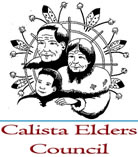 570 3rd Ave # 219 570 3rd Ave # 219
Bethel, AK 99559
(907) 543-1541
 625 C Street
Anchorage, AK 99501 625 C Street
Anchorage, AK 99501
(907)929-9200
anchoragemuseum.org
|
|
 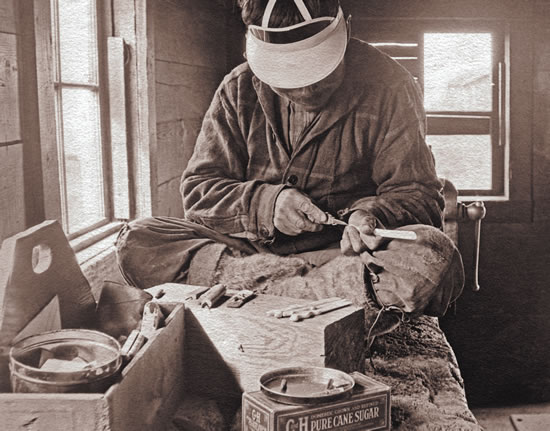
|
Martin Family Collection, 1930s, Anchorage Museum B07.5 |
Man carving ivory, possibly in the Kwigillingok school. |
 |
Tululiuryaraq Working with ivory
Tuluut ilait perlartut, ilait-ll' nalqigluteng. Tuluq-llu tua-i caliaqaqamegteggu perellra aturluku caliaqelaraat. Pillrit nalqinruluteng. Nutem perelriit nengtesciigalameng, muraunrilameng. Tulut peraayiuralriit tangnikenruluki nalqilriani.
Some ivory pieces are already bent, and some are straight. When they work on ivory they'd follow the curvature and make something. The naturally curved ivory couldn't be straightened because they are not flexible like wood. They like ivory that is a little bent more then the straight ones.
--Frank Andrew, Kwigillingok |
 |
Ciimat Stones
Tua-i cavigmek amllermek calissuutaitellruuq. Calissuutait-llu augkut tangtukput wangkuta ciimanek pilaqput. Tamakut calissuutait ipegcetevkenateng. Caliarit caperrnaqluuteng.
They didn't have many tools made from metal. And we called the tools we saw them use ciimat [stones]. The tools they used weren't even sharp. Their work was daunting.
--Willie Kamkoff, Kotlik |
 |
Asverem Enra Walrus Bone
Piciatun aturluki, qamigautekluki, cen'gaqluki, mellgarnun epuaqluki, kis'utekluki, nagiiquyanun-llu, tulimait, agluqurrit, tuluit, keggutait. Tamakut tamaa-i atulriartait, augkut-llu ava-i ucuit.
They would use [walrus bones] in various ways, as kayak sled runners, as kayak bow and keel protectors, crooked knife handles, gill-net sinkers, and on seal hunting spears, their ribs, jawbones, tusks, teeth. Those walrus bones were used, and also their penis bones.
--Frank Andrew, Kwigillingok |
Stone, bone, and ivory were essential materials in tool construction in the days before metal and plastic. Stones differed in hardness, from soft pumice used to smooth wood to hard stones used to cut meat and hides. Ivory and bone are both softer, organic materials with more flexibility. Yet both could be fashioned into fine points capable of piercing the skins of animals, large and small. |
| |
Keggalrun Pumice

|
Pumice
Paul John said, "They used these to polish wood when they carved tools and equipment and to polish the inside and outside of wooden bowls." |
.jpg) |
|
Jeff Foley |
Uiteraq Urasqaq-llu Ocher and White Clay
 |
|
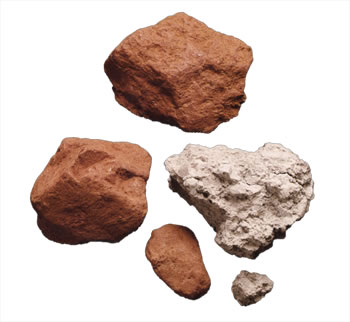
|
Red ocher and white kaolin clay mixed with water and used as paint. Uiteraq (red ocher), found on volcanic outcrops on Nelson Island, was said to have originated from the menstrual blood of Raven's daughter.
Theresa Moses said: "Uiteraq is used on wood and skins, and it makes things look good. If one does not have some, one misses it."
|
Ann Fienup-Riordan, 1994 |
| |
Qesuuraq Vivianite

|
Vivianite, a rare pigment found on cliffs on Nelson Island and pulverized to make blue paint. Paul John said: "Since it's hard to reach, they sometimes shot at the mountainside to get it." |
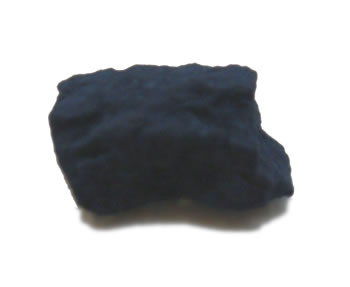 |
|
Ann Fienup-Riordan, 2007 |
Kepun Adz
 |
|
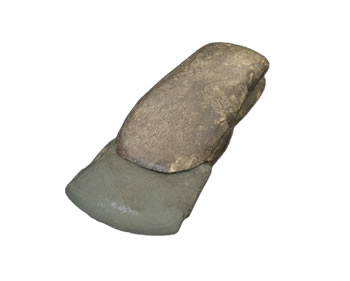
|
Adz with a greenstone blade, used to chop and plane wood.
|
I. C. Russell, 1902, Department of Anthropology, Smithsonian Institution 217798 |
| |
Caviggaak Knives

|
Knives
Frank Andrew remarked: "Men used slate-bladed knives for butchering. They were different sizes. The first people used slate on many things, as points on hunting implements and on weapons." |
.jpg) |
|
D. S. Neuman, 1918, Alaska State Museum IIA654, IIA655 |
Qiivuusaaq Bow Drill
 |
|
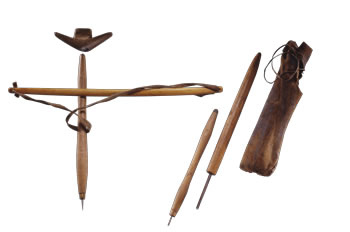
|
Qiivuusaaq/Bow drill used to engrave both wood and non-wood items.
|
F. Hunter, 1925, Courtesy, National Museum of the American Indian, Smithsonian Institution 24/4085 |
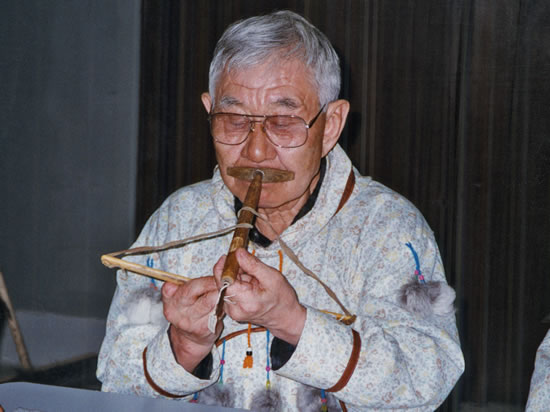
|
Ann Fienup-Riordan |
Paul John demonstrates the drill's use at the National Museum of the American Indian, 1997. |
Next
|
|

